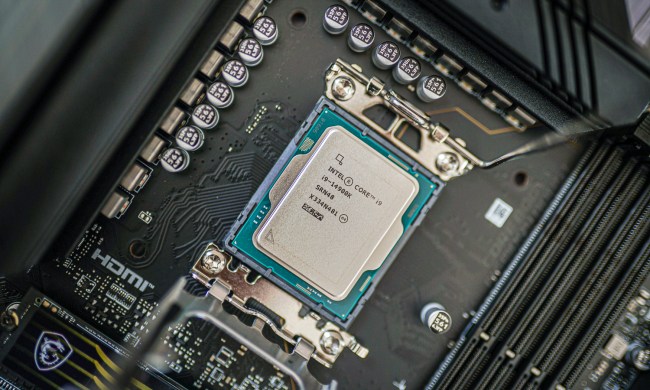In a video titled “Truth or Myth? Is SYSmark a Reliable Benchmark?” AMD’s John Hampton explains that SYSmark relies heavily on raw compute power, and as a result, it tends to favor Intel systems. A test performed in the video shows an Intel system with a Core i5 hitting a SYSmark 2014 score of 987, while an AMD rig hits 659.
The video then moves on to PCMark 8, a benchmark AMD believes to be less biased. In that test, the Intel system provides a score of 4,199, while AMD’s rig hits 3,908. AMD then also performs a real-world productivity test using a script that loads office software. In that test the Intel system again beats AMD but by a very slim margin.
There’s basis for AMD’s complaint. SYSmark is extremely reliant on processor capability, and in 2010 the Federal Trade Commission forced Intel to include a disclaimer whenever it uses the benchmark to boast of performance. The disclaimer states that “software and workloads used in performance tests may have been optimized for performance only on Intel microprocessors.”
It’s certainly true that Intel picks particularly favorable benchmarks when it quotes performance. In addition to SYSmark, the company often uses MobileMark, which can be used to judge battery life. Its results frequently exceed those obtained through other methods of testing, such as the Peacekeeper and web browsing scripts we use at Digital Trends.
But AMD’s complaint feels like the pot calling the kettle black, as its own comparisons have similar flaws. The company says it uses “PCMark 8 accelerated,” which references the GPU-accelerated versions of the software, and a disclaimer at the end of the video shows that AMD compared an HP laptop that was paired with an AMD processor and Radeon R7 GPU to an HP system with Intel HD 5500 graphics (which is not the latest hardware from Intel).
The PCMark 8 test lists the $650 HP Envy m6-p013dx as the AMD system tested, while the HP 15-r210dx is listed as representing Intel. That model of the HP 15 is no longer widely available, but when it was in production, it went for $530. HP does not sell a price-comparable Intel notebook with discrete graphics, but Acer, Asus, and Dell build notebooks with an Intel Core i5 and Nvidia discrete graphics for as little as $500.
Different systems were used for AMD’s custom productivity test, too. For that, its own products were represented by an HP Elitebook 745 G3 with a Radeon R7 discrete GPU, while the Intel system was an HP ProBook G2 with HD 5500 graphics.
I can’t say how each was priced, because neither is broadly available in North America.
It seems AMD’s attempt to discredit Intel uses tactics very similar to those it slams Intel for. The company has cherry-picked systems and benchmarks to create a scenario that paints AMD hardware in a favorable light. Nothing in the video is technically incorrect, but whether it’s a representation of the “real world,” as the video claims, is up for debate.



